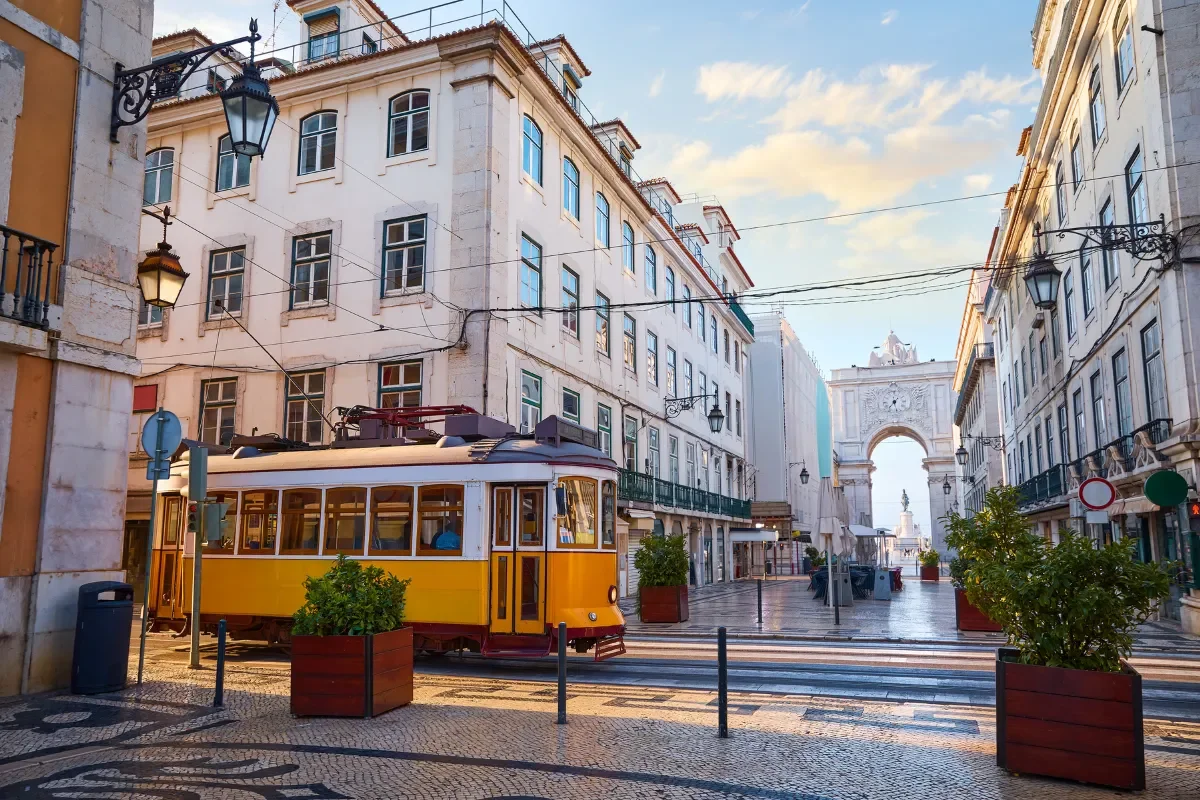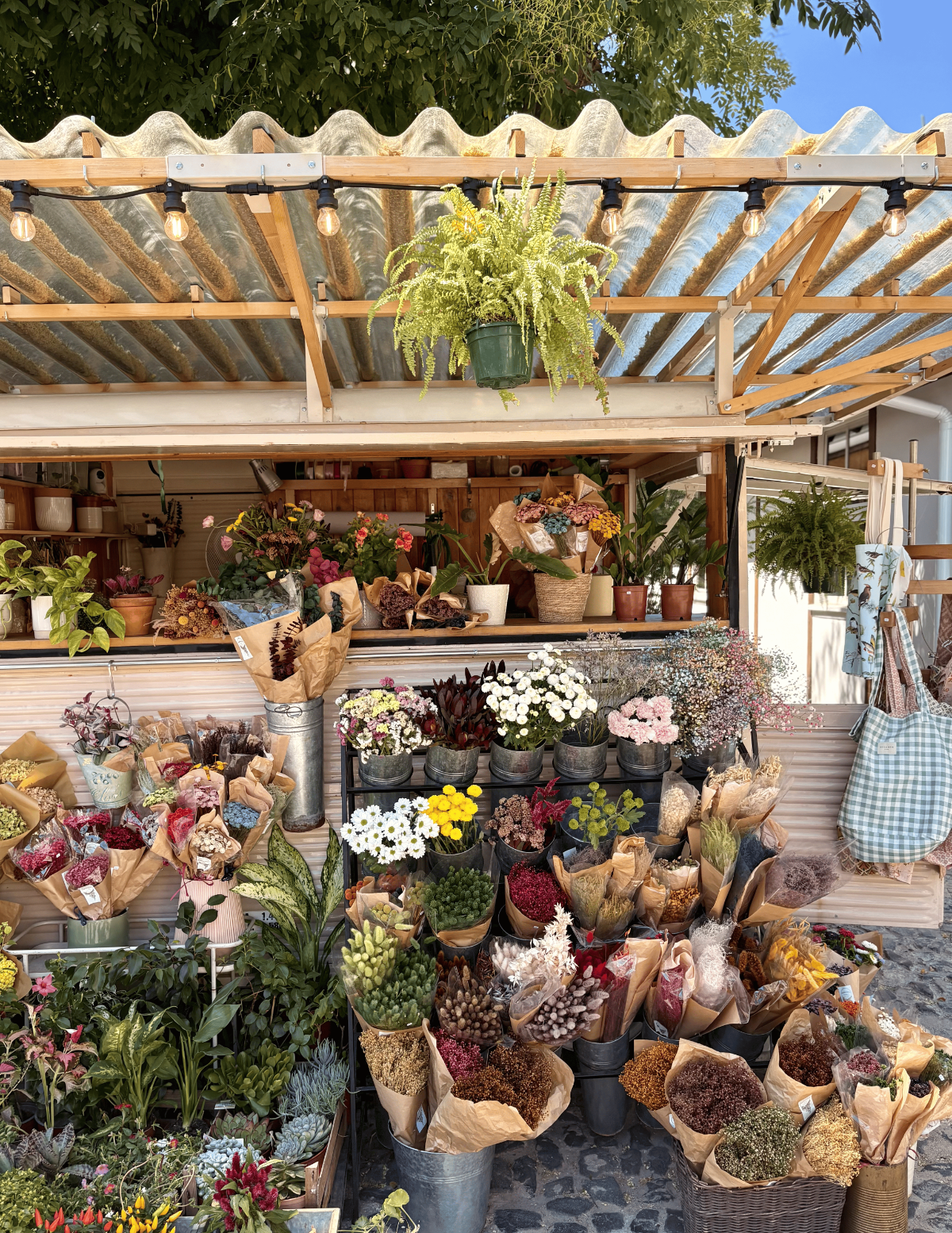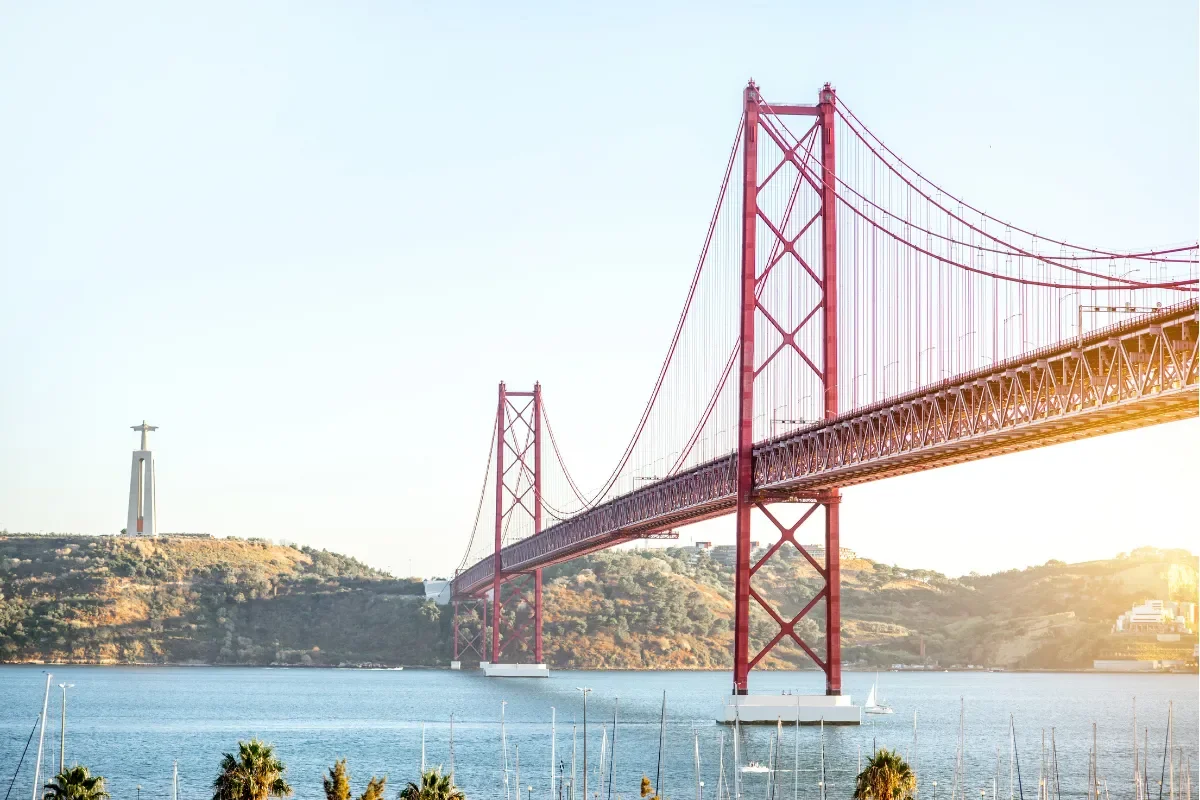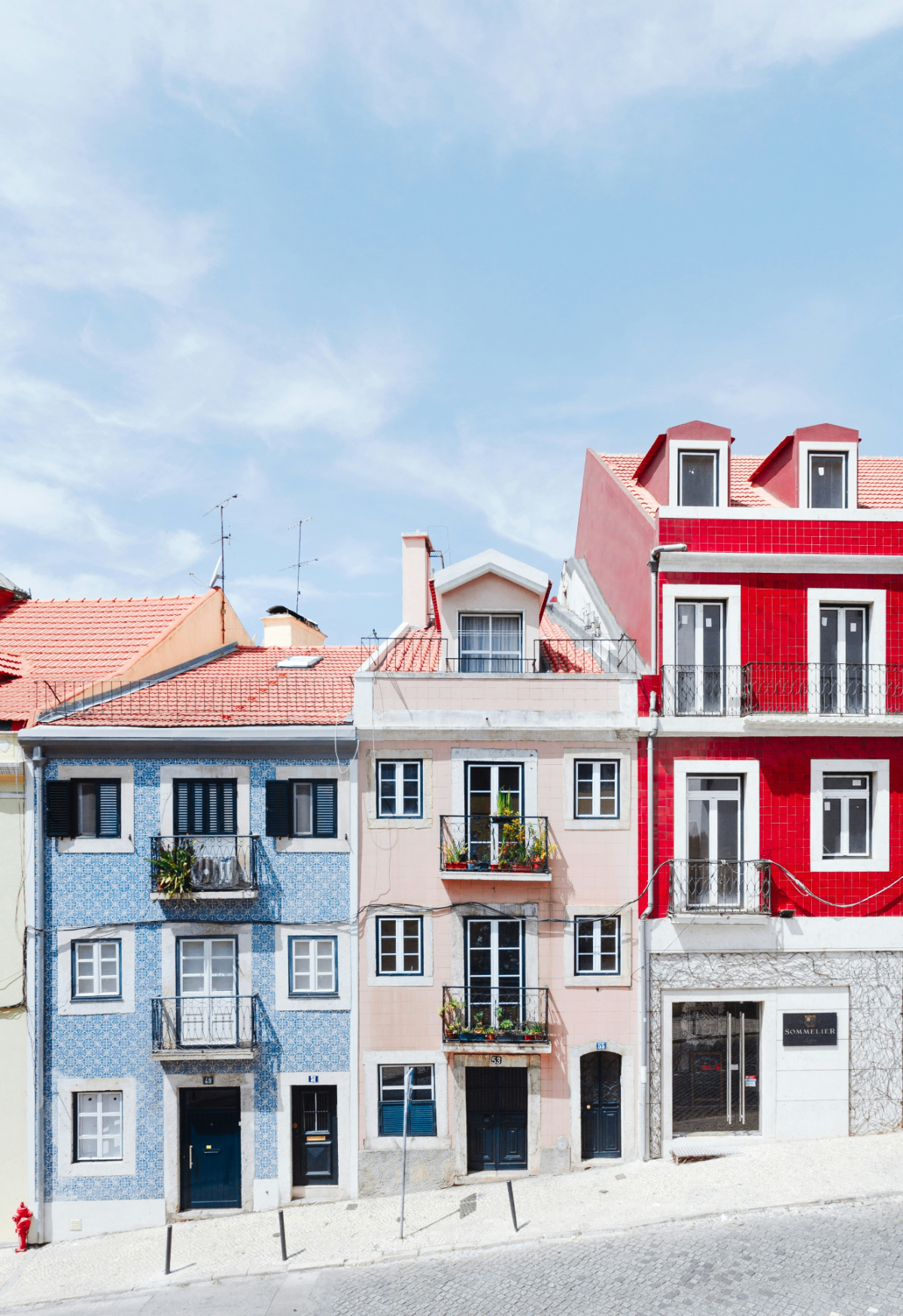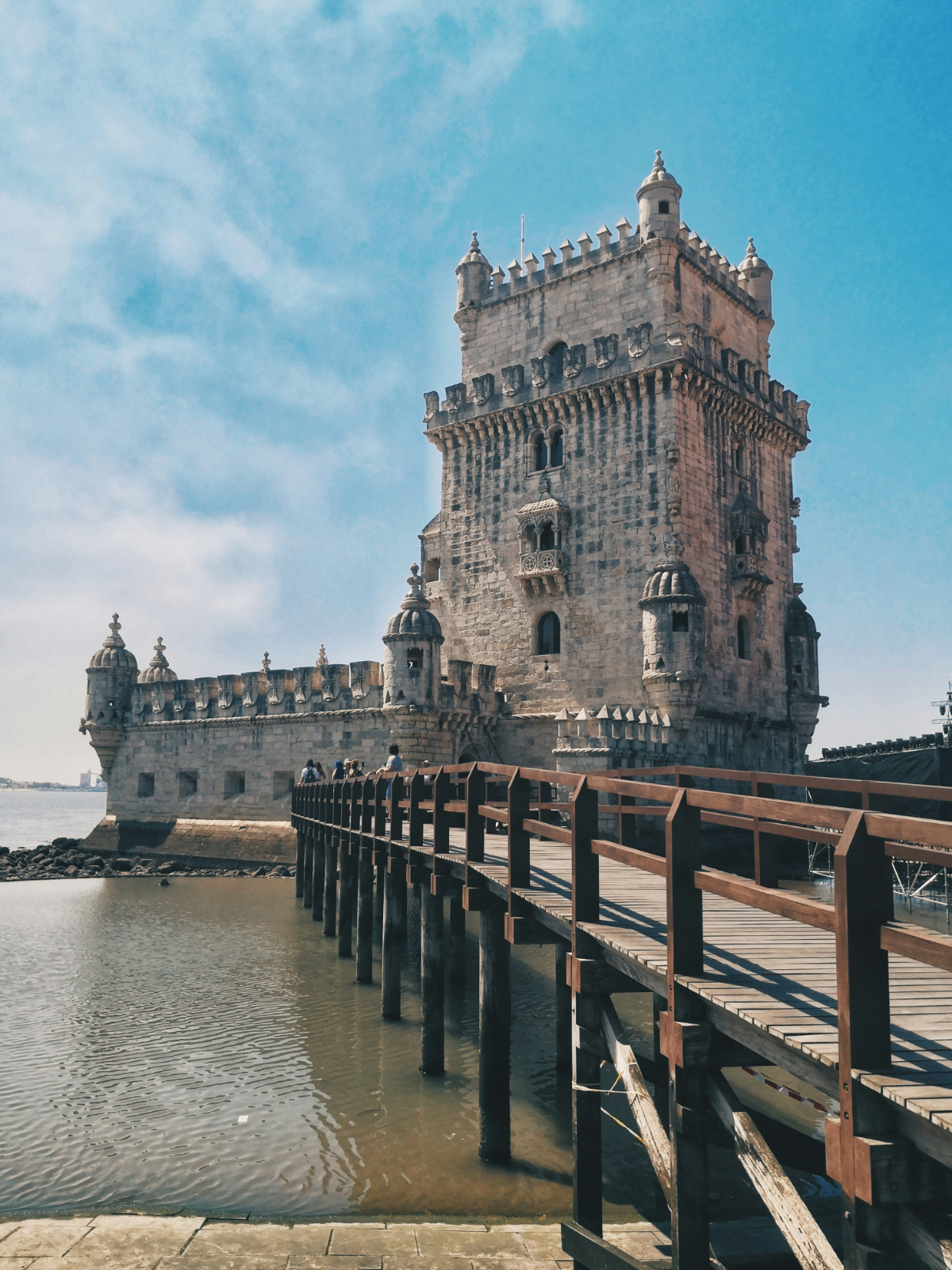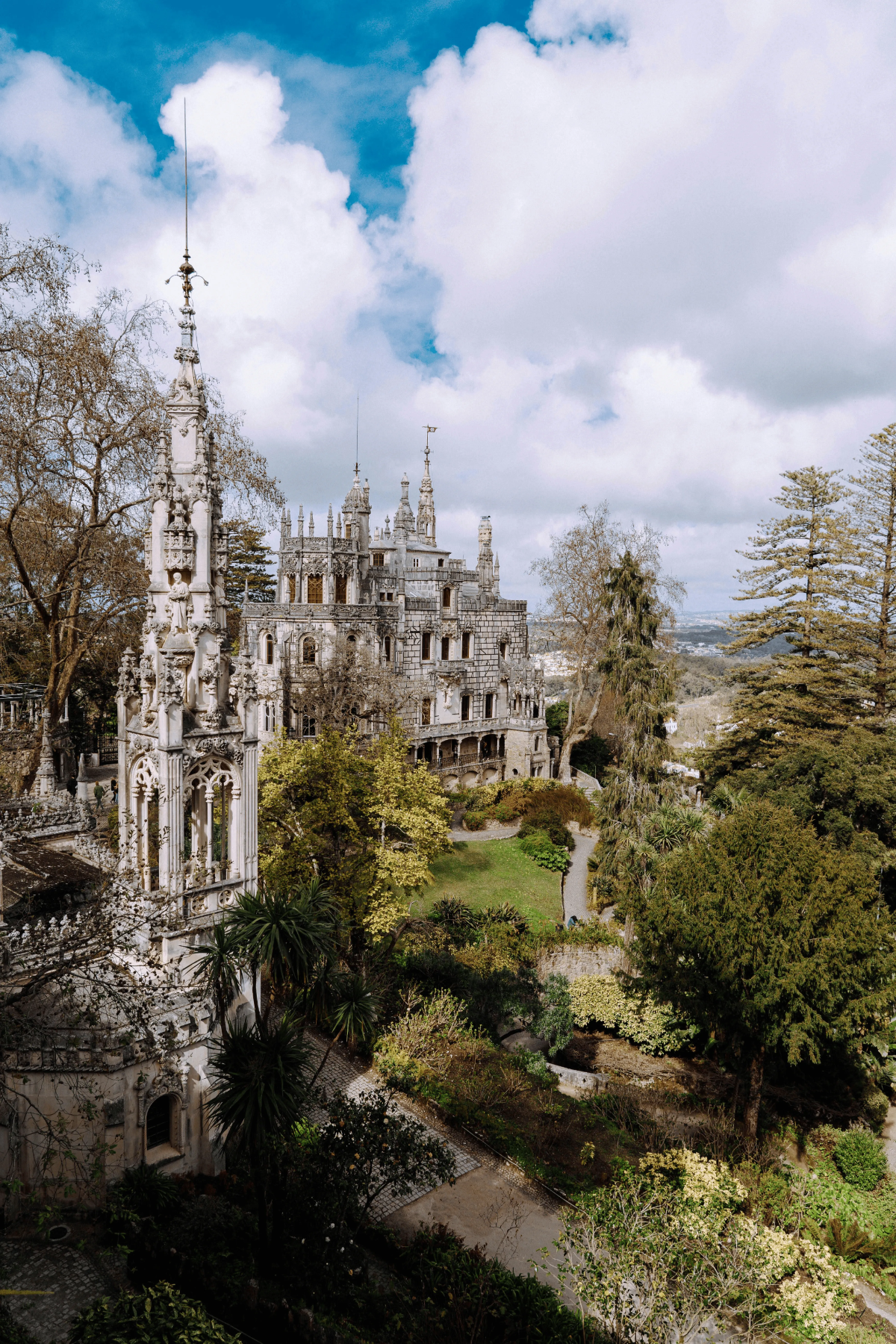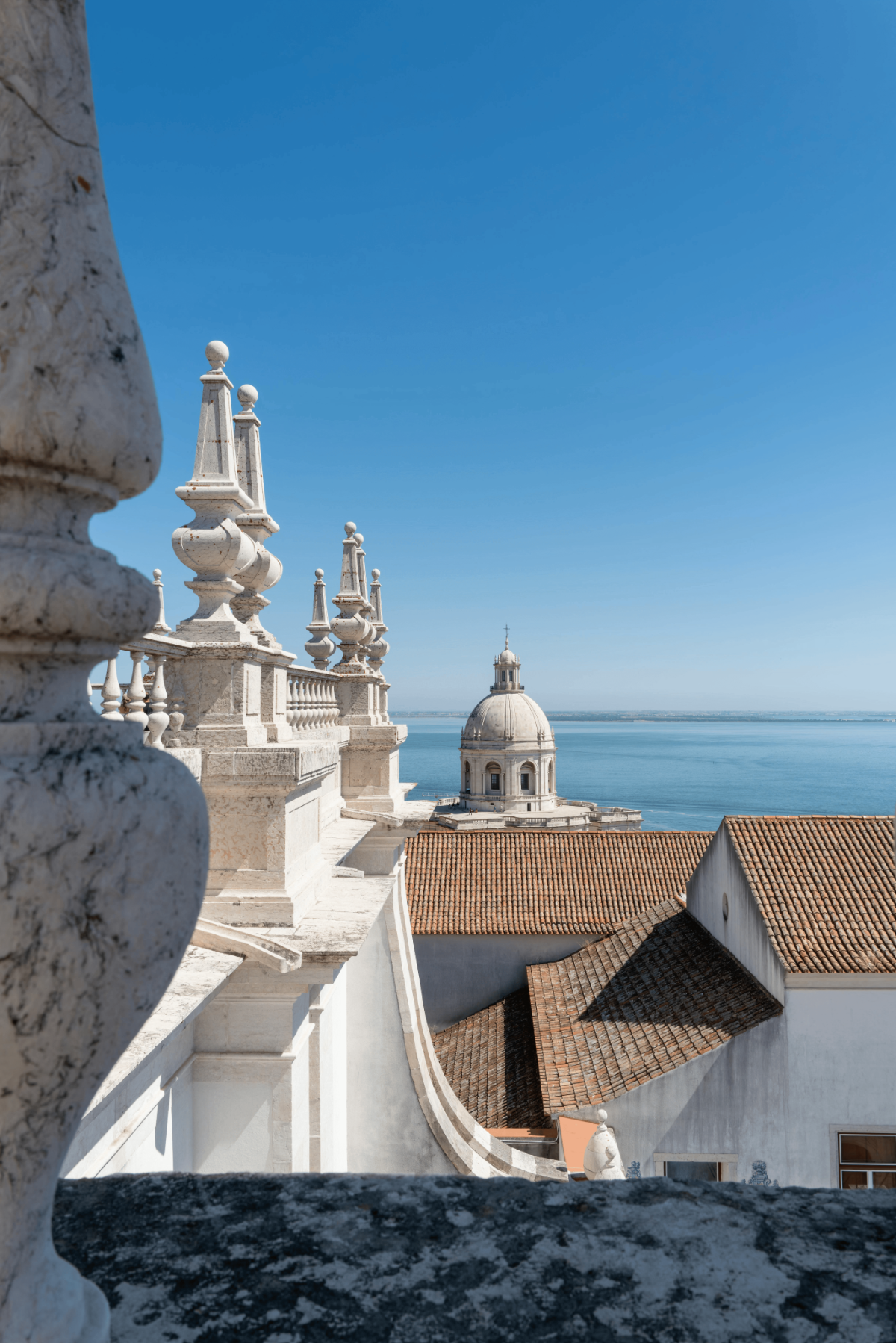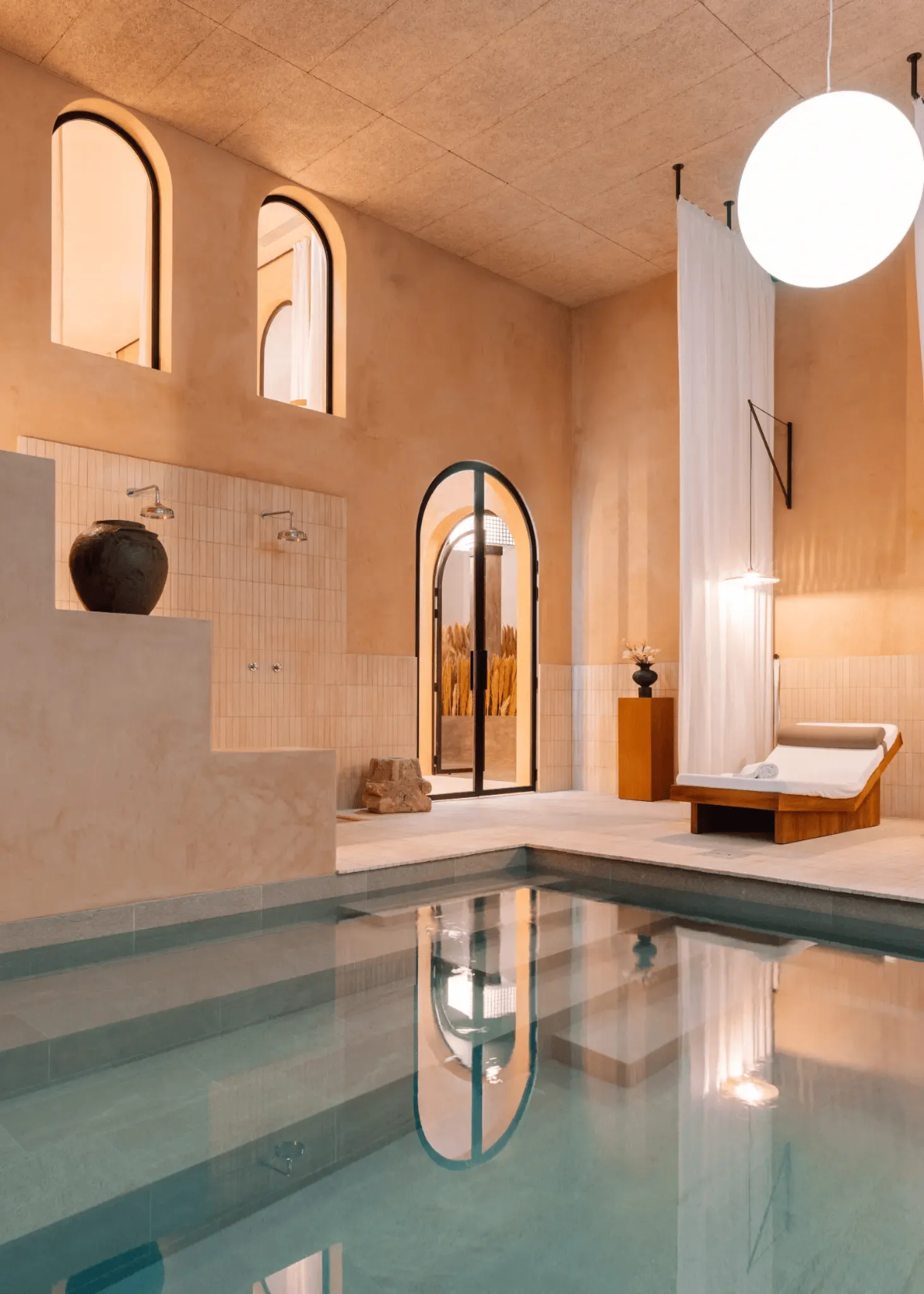Essential Things to Do in Lisbon for Curious Explorers
Last update October 29, 2025
Things to do in Lisbon span pastel de nata pilgrimages, tram rides, Tagus River sails, and Sintra day trips. Craft a vivid itinerary with insider insights.
Lisbon greets newcomers who visit Portugal like dawn meeting the Atlantic: softly, slowly, with bands of pastel light that expand until alleys glow gold. Azulejo tiles glimmer like fish scales along façades, the color of faded sorbet. Jacaranda blossoms drift onto mosaic sidewalks, confetti for no parade except daily life. A salt-sweet breeze ferries the distant clang of shipyard metal and the fizz of waves beyond the Tagus estuary. Tram bells chirp like sparrows, punctuating conversations in cafés where cinnamon dust floats above fresh custard tarts. Look closer and more layers surface: a Manueline doorway sculpted with tangled ropes, Moorish stairs worn concave by centuries of eager feet, Fado refrains rising from candlelit taverns.
You could blaze through Lisbon in forty-eight hours, ticking off castles, towers, and tiled churches. Yet the city rewards those who notice texture. This slow-travel guide strings together iconic landmarks and secret courtyards, seasonal dishes and mindful detours. Move at a walking pace, linger for second helpings, and treat Lisbon as a living archive where stories bloom in sensory detail.
What You'll Discover
Affiliate Disclosure
Some links in this post are affiliate links. That means we may earn a small commission, at no additional cost to you, if you choose to make a purchase. These are always brands, stays, or experiences we would recommend to a dear friend. Thank you for supporting the quiet sustainability of Terra Selene.
Central Lisbon Highlights
Alfama
Alfama is the medieval heart of Lisbon, Portugal, a compact hill of alleys, archways, and stone staircases that predate the 1755 earthquake. Set out early morning and you’ll find woodsmoke and sweet bread mingling in the air. Narrow steps climb past story‑book doorways, their lintels low from Middle Ages proportions. Portuguese people are renowned for sweeping their stoops while radios crackle with morning news and laundry flutters like bright flags of daily life. The scene speaks to the district’s rich history yet feels instantly welcoming.
Pause at the famous landmark, Miradouro de Santa Luzia. Bougainvillea climbs white columns to frame a river panorama that feels cinematic. Azulejo panels nearby retell the 1147 siege when crusaders and Portuguese forces reclaimed the city from the Moors. The viewpoint offers a different perspective on Alfama’s rooftops before you resume the climb to São Jorge Castle.
On the ramparts, the city fans out: terracotta tiles ripple toward the Tagus, ferries cut chalk lines across the water, and sunrise ignites the 25‑de‑Abril Bridge. From here you can spot many of Lisbon’s main attractions: Baixa’s orderly grid, the cathedral’s twin towers, and the distant dome of the National Pantheon. Visit the camera obscura in the tower for a live and absolutely stunning 360‑degree projection of the skyline, a real‑time map of where to wander next.
Baixa and Praça do Comércio
Earthquakes seldom build, but Lisbon’s 1755 catastrophe birthed Baixa, Europe’s first rigorously planned city center. Even on Google maps, the streets follow a tidy grid oriented toward the Tagus River, an enlightenment dream of reason over chaos. Begin at Rossio Square, once a site of bullfights and public executions, now home to café terraces where pastelaria windows showcase pyramids of queijadas, cheese tarts. Notice the black‑and‑white wave pattern underfoot where local craftspeople once laid each limestone and basalt tile by hand, a maritime motif echoed in Copacabana decades later.
Stroll south on Rua Augusta beneath wrought‑iron balconies dripping with geraniums. Peek into haberdasheries selling linen napkins embroidered with sardines, or tiny barbershops frozen in art‑deco amber. Pass under one of Lisbon's most iconic sights, the Arco da Rua Augusta, a triumphal arch crowned by allegorical statues of Glory crowning Genius and Valor.
Praça do Comércio appears in a flash of space and light, its yellow arcades framing a stage for sky and water to meet. This plaza once bustled with customs officials taxing cargo from Brazil, Goa, and Mozambique. Today, locals sip bica, espresso’s, at sunlit cafés while skateboarders practice ollies on marble ledges. Stand near the bronze statue of King José I on horseback and follow mosaic compass roses that chart voyages of Magellan and da Gama. Every step here is both prologue and epilogue to oceans of history.
Graça, Mouraria, and Avenida da Liberdade
Ride on the number 28 tram line, or hike if your calves allow, up to Miradouro da Senhora do Monte in Graça. The viewpoint sits beside a small 17th‑century chapel and offers a rarer, quieter panorama than Santa Luzia below. Locals picnic on stone benches, uncorking Vinho Verde and unwrapping tins of sardines while the urban tapestry unfurls beneath them. Graça’s streets mix working‑class cafés with sleek brunch spots, an evolving dialogue between past and gentrifying present.
Descending, you enter Mouraria, birthplace of Fado and one of the most diverse quarters in Lisbon, Portugal. Pakistani grocery shops stack mango crates beside Portuguese pumpkins, Cape Verdean diners ladle cachupa stew, and labels like Príncipe Discos press Afro-electronic kuduro beats onto vinyl. Murals of feminist poets and independence heroes color walls once tagged with political slogans. Sample a pastel de nata at Pastelaria Santo António, then pop into a Mozambican grocery for peri-peri peanuts; every exchange here, whether talk or taste, carries equal cultural weight.
Avenida da Liberdade, Lisbon’s Champs-Elysées, runs from tree-lined Restauradores Square to Marquês de Pombal Square, where it feeds directly into Eduardo VII Park. High-fashion boutiques hide cinematic Art Deco lobbies, and fountains mist over benches where pensioners read sports papers. In late May, the jacarandas bloom, dropping lilac petals that complement designer window displays better than any marketing team could plan. Detour into Jardim do Torel via the Lavra funicular; in summer, a shallow pond is ringed with deck chairs that overlook red-roof vistas, offering a quiet reset for tired feet. Many travellers pair this hill-hopping morning with an afternoon train to Sintra, see our step-by-step guide to the palaces and forests for seamless planning.
Chiado and Bairro Alto
Chiado blends literary pedigree with contemporary retail and belongs on any things to do in Lisbon list. Start at Livraria Bertrand (1732), recognised by Guinness World Records as the world’s oldest bookstore, adored by all who have visited Lisbon. Across Rua Garrett, Café A Brasileira, which opened in 1905, pours strong bica under gilt ceilings while a bronze Fernando Pessoa keeps terrace watch. Two doors along, Café Benard, a renowned pastry shop, supplies custard‑filled croissants in addition to their pastel de nata under one roof, which locals queue for at brunch. Art lovers should step into MNAC, Museu Nacional de Arte Contemporânea do Chiado, whose skylit halls showcase Portuguese modernists such as Amadeo de Souza‑Cardoso. A five‑minute walk beyond brings you to the roofless Carmo Convent, a Gothic nave left open to the sky since the 1755 earthquake. To seal the day with a dusk panorama of Lisbon, ride the Santa Justa elevator, then cross the gangway to the Terraço do Carmo rooftop bar.
After sunset, Bairro Alto shifts gears. Bars on Rua da Barroca shake caipirinhas; wine rooms on Travessa da Espera pair petiscos with Dão reds. Browse crates at Vinyl Experience (Calçada do Duque) or Groovie Records (Rua da Rosa); collectors absolutely loved the curated fado and kuduro sections. Traditional Fado lives on at Tasca do Chico (Rua do Diário de Notícias) every Monday and Wednesday. Arrive by 7 PM for a seat.
Santa Justa Lift and the Miradouro Circuit
The Santa Justa Lift looks like a Parisian cousin, and indeed its neo‑Gothic filigree comes from an apprentice of Gustave Eiffel. Queue early to ride the polished wood cabin 45 meters upward to Carmo Square, as this is indeed one of the top things to do in Lisbon. On the top deck, the city unfurls in perfect symmetry: Baixa’s grid to the south, Alfama’s maze to the east, the castle’s crown behind you, and the river rolling seaward.
Miradouros, or viewpoints, script the city’s pulse. After Santa Justa, walk to Miradouro de São Pedro de Alcântara, where a landscaped terrace hosts jazz quartets on summer evenings. Later, climb to Miradouro da Graça for late‑afternoon tiles glowing peach under slanted sun. Lisbon never truly sleeps; it simply changes its soundtrack.
Culinary Essentials
Pastéis de Nata Pilgrimage
The pastel de nata is Lisbon’s signature pastry and a rite of passage for anyone exploring Lisbon’s food culture. The story begins at Jerónimos Monastery, where monks used egg whites to starch habits, leaving surplus yolks. Those yolks became a Portuguese version of custard baked in puff-pastry cups. When the monastery closed, lay bakers carried the recipe to Pastéis de Belém in 1837. Today the blue-tiled shop ranks among the city’s top tourist attractions; locals still order by the dozen and dust each tart with cinnamon and powdered sugar.
Take a seat, watch bakers fold butter-rich dough into tight coils, then slide trays into brick ovens that roar near 400 °C. The result is factual, not poetic: a crisp shell that shatters, a custard centre that barely holds its shape, bright citrus notes and caramelized spots. Across town, Manteigaria rings a brass bell every fifteen minutes to announce fresh batches. Loyalists debate which shop wins on flavor, sweeter custard or flakier shell, often staging blind tastings as part of a guided food tour.
If you have time for only one bite, consider choosing the bakery closest to your tram stop; both serve classic tarts. Serious eaters sample multiple shops, compare, and leave with strong opinions worth sharing over coffee back home. Balance all that sugar with a day of relaxation at one of the country’s most renowned sanctuaries.
Markets, Seasonality, and Street Snacks
Mercado da Ribeira (Time Out Market) places fifty chefs under one wrought‑iron roof, first built in 1892. Grab a tray and sample octopus hot‑dogs drizzled with yuzu mayo, black‑ink risotto shaped like nigiri, and slow‑roasted suckling pig that melts beneath crisp crackling. High tables encourage strangers to share benches, both a fun place and an edible parliament where seafood fans negotiate bites in multiple languages.
Yet authenticity often lives away from camera‑ready food halls. Mercado de Campo de Ourique buzzes with locals comparing sardine fat content or debating whether Algarve oranges in southern Portugal taste sweeter after winter frost. Vendors slice queijo da serra so soft it spreads like butter; fishmongers display scabbard fish with teeth bared in eternal scream. Ask for two percebes, Portugal’s fearsome goose‑barnacles. They look prehistoric yet taste like kissing a mermaid - saline, sweet, indescribably of the ocean.
Street snacks fuel walking tours. Bite into prego rolls where beef sizzles in garlic butter and mustard erupts with sinus‑clearing zeal. Rissóis, half‑moon pastries, conceal minced shrimp béchamel under a breadcrumb crust. Suppress hunger pangs with caldo verde, a kale and potato soup streaked emerald, ladled steaming into disposable cups at ferry terminals. Always keep coins when on a private tour or meandering the food market; some stalls shun cards, a nod to trust over technology.
Walking Food Tours and Cooking Classes
Sign up for a Mouraria gastronomic walk with a historian fluent in spice routes. Your small group might begin at Taberna do Calhau, sampling fig compote atop sheep cheese, segue to a century‑old bacalhau shop where salted cod hangs like parchment scrolls, then slip into an Indian sweet house for cardamom‑infused milk fudge, legacies of colonial Goa crossing seas again through taste. On rooftops repurposed as gardens, swirl olive oil from Alentejo over cornbread while the guide narrates how dictator Salazar once rationed wheat but never touched olives, symbolic of Portuguese endurance.
Prefer a chef’s apron to a guide’s microphone? Book a market‑to‑menu. Dawn shopping at Mercado da Ribeira yields clams still spitting seawater, tomatoes smelling of sun, and bunches of cilantro destined for amêijoas à Bulhão Pato, a dish that marries bivalves, garlic, white wine, and herbs in five fragrant minutes. Students unload produce from the food market in a vaulted kitchen, don striped aprons, and learn why Portuguese cooks never pre‑rinse rice for seafood rice stew (the starch thickens broth). Sit to feast with strangers turned friends, clinking glasses of verdehlo as trams hush by outside the studio windows.
Art and Culture Pulse
Museums and Contemporary Hubs
Lisbon’s art scene pivots between old master canvases and digital experiments challenging what a museum can be. Start at MAAT, a sinuous white shell designed by Amanda Levete hugging the riverbank like a breaking wave. Inside, exhibitions explore renewable energy, virtual landscapes, and post‑capitalist futures. The rooftop doubles as a public park where skateboarders practice tricks against the 25‑de‑Abril Bridge backdrop.
A short walk next door, the Berardo Collection hangs Andy Warhol beside Ad Reinhardt and Basquiat, pulling pop art and political commentary into playful tension. Across town, the National Tile Museum lives inside a 16th‑century convent. Its centerpiece, the 23‑meter Lisbon Panorama, portrays the city before the quake, a time capsule in cobalt and ochre.
At the Gulbenkian Museum, oil‑rich Armenian collector Calouste Gulbenkian’s 6,000-piece assemblage ranges from Egyptian amulets to Monet lilies. Galleries flow into Zen gardens where koi flash like stained glass in motion. Carmo Convent, left roofless since 1755, stands as sculpture itself. By nightfall, floodlights paint the skeletal arches electric indigo against a velvet sky.
Street‑Art Corridors and Creative Villages
Lisbon balances preservation and creation. While the city’s art museums safeguard heritage canvases, its walls evolve daily. Begin on Calçada da Glória at the open-air Galeria de Arte Urbana. This legal mural gallery refreshes every few weeks; you might see Bordalo II’s three-metre raccoon made from recycled plastic or Tamara Alves’s painted wolves sprinting across concrete. Because the site sits near Rossio station, you can fold it into a Sintra day trip without detouring far.
Next head east to Marvila, a dockland area where early-20th-century wine warehouses now host craft breweries, screen-printing studios and vast blank walls for large-scale murals.
End at LX Factory, a 19th-century textile complex tucked under the 25 de Abril Bridge. More than 50 design shops, cafés, and co-working lofts occupy its brick corridors. Climb a graffiti stairwell quoting Fernando Pessoa, browse hand-dyed leather sneakers at Undo, sip cold-brew at Wish Coffee, and ride the lift to Rio Maravilha rooftop. A neon sign reading “The River Loves You” glows pink while container ships pass beneath the bridge. On Sundays, the LX Rural flea market spreads across cobblestones with vintage typewriters, mid-century tile fragments, and linen dresses catching the estuary breeze.
Literary and Vinyl Sanctuaries
Lisbon nurtures analog devotion. Livraria Ler Devagar, Portuguese for "Read Slowly," stretches five stories within LX Factory. Bicycles hang midair as kinetic sculptures; a Heidelberg press clacks in one corner, printing limited‑run chapbooks. Climb spiral stairs to mezzanines where graphic novels nest beside philosophy tomes. Authors hold readings among towering shelves; the hush feels cathedral yet wonderfully informal.
Chiado shelters Boutique da Cultura Ferin, the oldest family‑run bookshop in Lisbon. Here you might find first editions of José Saramago or bilingual poetry by Sophia de Mello Breyner Andresen. Bairro Alto’s Vinil Experience spins Black Rio funk on Thursdays; chat with owner Rui about which Cape Verde pressing of Cesária Évora retains the warmest horn section. Pair crate‑digging with a cortado from nearby Fábrica Coffee, where beans roast in copper drums, then settle into a window seat to annotate your new finds.
Fado Evenings
Fado emerged in nineteenth‑century taverns near Lisbon’s docks, blending sailors’ laments with African and Brazilian rhythms. Today, the tradition lives on in small taverns known as casas de fado as well as formal concert rooms.
For an intimate performance, head to Mesa de Frades at Rua dos Remédios in Alfama. The venue occupies a former royal chapel, seats about forty people, and presents three half‑hour sets every night except Monday. The cover charge is twenty‑five euros and includes a glass of wine plus light petiscos; booking is essential.
If you prefer a structured concert, the Museu do Fado on Largo do Chafariz de Dentro stages one‑hour shows from Wednesday to Sunday at seven o’clock. Tickets cost fifteen euros and include access to a small exhibition that explains instruments such as the twelve‑string guitarra portuguesa and the six‑string viola da fado. Nearby Adega Machado, founded in 1937, offers four nightly sets; you may choose a fixed‑price dinner for forty‑nine euros or attend the show only for twenty‑five.
Waterfront and Tagus River Moments
Belém Tower, Jerónimos Monastery, and Age‑of‑Discovery Echoes
Journey west along the Tagus River by tram 15. The first stop on this route will lead you to the Jerónimos Monastery. Manueline architecture here reaches baroque exuberance, stone ropes, armillary spheres, and coral motifs writhe across cloisters. As you step inside the nave, sunlight filters through stained glass in bands of violet and gold, illuminating da Gama’s white marble tomb. Every echo reminds you that this was a launchpad for caravels that once circled Africa and ignited a global spice trade.
Walk the riverside promenade to Belém Tower, Torre de belém, one of the essential things to do in Lisbon. At low tide, basalt outcrops frame the fort; at high tide, the Tagus reaches its lower gun platforms. Completed in 1519, the tower is carved from pale limestone and decorated with rope coils and small Moorish turrets. A tight spiral staircase leads to the rooftop terrace, where clear days reveal the 25 de Abril Bridge and the broad estuary Portuguese navigators once sailed toward the Atlantic.
Day Trips Made Easy
Sintra
Visiting Sintra feels air-conditioned by nature; its evergreen microclimate stays cool beneath moss-draped cedars. The train from Rossio takes forty minutes and costs less than three euros. Arrive at Pena Palace for the nine o’clock opening when mustard and raspberry turrets glow in the early sun and queues are short. Interiors fuse Bavarian kitsch with Portuguese Romanticism, stucco walls, trompe-l’œil ceilings, and carved teak from Goa. Outside, camellias perfume gardens where black swans glide across mirror ponds once reserved for the royal family. From the gate, it is a fifteen-minute walking tour down forest paths to Castelo dos Mouros; granite ramparts zigzag like an Iberian Great Wall, and Atlantic gusts reveal coastline stretching toward Nazaré. Break for travesseiros almond pastries in Sintra’s city center, then tuk-tuk six minutes to Quinta da Regaleira, where gargoyles guard grottoes and an inverted tower spirals nine floors underground. Bus 403 runs twenty-five minutes west to Cabo da Roca, the westernmost point of continental Europe; ocean wind slams 140-meter cliffs, and the lighthouse keeps vigil over shipping lanes that Portuguese navigators opened half a millennium ago. For more palace-entry tips, forest shortcuts, and dining ideas, explore our comprehensive Sintra guide.
Óbidos Medieval Village
Óbidos lies eighty kilometers north, reached in one hour by the A8 highway or an hour and ten by regional bus from Campo Grande. The walled town wraps white‑washed lanes in indigo trim; the rich history includes a 13th‑century royal palace now converted into a pousada. Enter through Porta da Vila’s baroque gate tiled in Passion scenes, sip ginjinha de Óbidos from a chocolate cup, and climb granite stairs to the ramparts. In July, the Medieval Fair fills squares with jousts, roasted boar, and troubadours brandishing lutes, locals say they absolutely loved last year’s torchlit procession.
Nazaré’s Colossal Waves
Two hours by bus from Lisbon’s Sete Rios station, Nazaré straddles a submarine canyon that funnels Atlantic swells into waves taller than ten‑storey buildings. The funicular up to Sítio costs €2.50 return; the lighthouse museum documents Garrett McNamara’s record‑setting 2011 ride. Peak surf season spans November to March; in summer, calmer seas suit swimming and grilled sardines along the promenade. Watching board‑riders tilt down fifty‑foot faces ranks among Portugal’s most visceral tourist attractions.
Évora Megaliths and Amphora Wine
Alentejo trains leave Oriente station hourly, covering the 130 kilometers to Évora in ninety minutes. Roman ruins frame a skyline of white chimneys; the bone‑lined Capela dos Ossos reminds guests that memento mori is universal. Taxi or rental car, fifteen kilometers west to Almendres Cromlech, a megalithic ring older than Stonehenge. Back in town, wineries pour talha, a Portuguese version of amphora wine aged in clay jars sealed with olive oil, the same method the Romans used. Pair reds with lamb stew seasoned in garlic and olive oil; many visitors confess they absolutely loved the earthy tannins.
Arrábida and Setúbal Dolphin Bay
Drive or take the Fertagus train across the Tagus River to Setúbal (fifty minutes), then ride a coastal bus twenty minutes to Arrábida Natural Park, where chalk cliffs drop into water the color of malachite. Trails scented with rockrose descend to coves monks once used for salt harvests. Book a private tour on a research boat; marine biologists explain dolphin social codes while you watch bottlenose pods draft the bow wave. Return to Setúbal for choco frito, cutlet‑sized fried cuttlefish, before a late‑afternoon train glides back over the river toward Lisbon’s seven hills. Travellers who value recovery time can follow the coast south to discover thermal spa retreats dotted across Portugal.
Frequently Asked Questions
What are the top things to do in Lisbon?
Begin in central Lisbon with a stroll through Baixa and up to Alfama for the viewpoints at Miradouro de Santa Luzia or Senhora do Monte. Ride Tram 28 for a rolling tour of seven hills, then visit the Lisbon Cathedral and climb the nearby Castelo de São Jorge. Head west to Belém for Jerónimos Monastery, Belém Tower and a box of pastéis de Belém eaten while walking the Tagus riverfront. Round out the day at MAAT or the Berardo Collection for modern art, explore the converted industrial hub of LX Factory and finish with live Fado in a small Alfama tavern.
Is three days in Lisbon too long?
Three full days match the city well: Day 1 covers Baixa, Alfama, and Castelo de São Jorge; Day 2 focuses on Belém’s monuments plus LX Factory; Day 3 allows either a day trip to Sintra or Cascais or deeper dives into art museums, the Oceanário, and neighbourhoods like Mouraria or Campo de Ourique. Travellers often fit the highlights in two days, but a third day prevents rushing and opens space for a sunset sail on the Tagus or a food-tasting walk. If you have more time to explore, consider leaving Lisbon on foot to walk part of the historic Camino Português from Porto to Santiago.
What are Lisbon's well-known tourist attractions?
Belém Tower, Jerónimos Monastery, the Monument to the Discoveries, and MAAT line the Belém waterfront. In central Lisbon, Praça do Comércio, the Santa Justa Elevator, Rua Augusta Arch, Lisbon Cathedral, Castelo de São Jorge, and the viewpoints of Santa Luzia and Senhora do Monte draw steady crowds. Further sights include the Tram 28 route, the Oceanário de Lisboa at Parque das Nações, and the National Tile Museum.
What must I do in Lisbon?
Eat a freshly baked pastel de nata, ideally from Manteigaria or Pastéis de Belém, ride Tram 28 at an off-peak hour, listen to live Fado in a traditional tavern, watch sunset from a miradouro, tour Jerónimos Monastery and Belém Tower to understand Portugal’s seafaring past, and wander Alfama’s lanes early morning when only the cathedral bells and bakery scents break the quiet.
Carry Lisbon Home
Lisbon lingers beyond boarding passes. You’ll remember the zing of vinho verde on a sunset terrace, the first bite of a pastel de nata still warm from the oven, and the hush that settles inside a Fado house just before applause. Azulejo patterns will surface in daydreams, and every distant tram bell will bring back the feel of cobblestones underfoot. Whether you followed every route in this guide or discovered your own shortcuts, the city now travels with you, stitched into memory like sunlight in tile grout. When saudade calls, the seven hills and the broad light of the Tagus will be waiting to greet you again.



